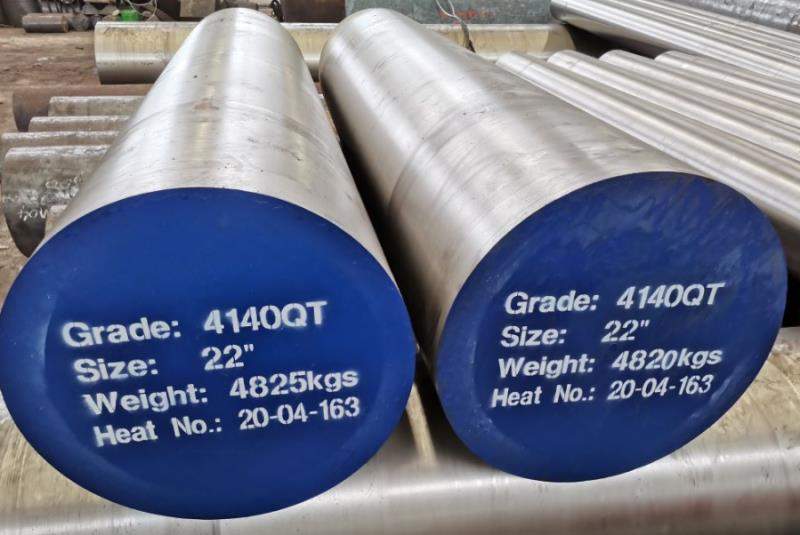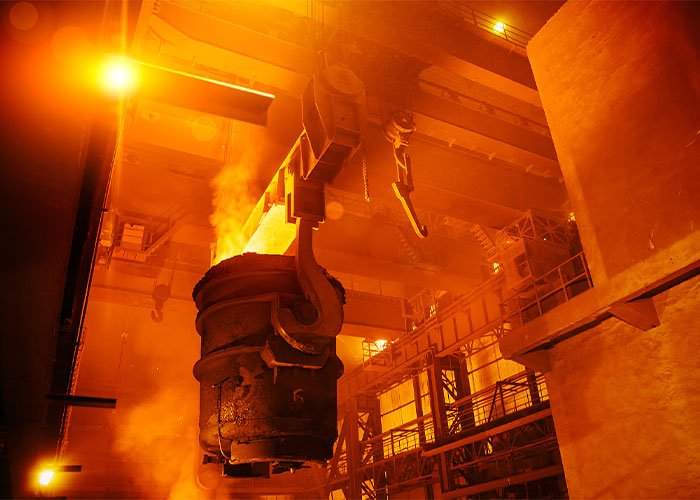Welcome to My Blog!
Before we dive into the content, I’d love for you to join me on my social media platforms where I share more insights, engage with the community, and post updates. Here’s how you can connect with me:
Facebook:https://www.facebook.com/profile.php?id=100085401406977
LinkedIn:https://www.linkedin.com/showcase/102680001/admin/dashboard/
Now, let’s get started on our journey together. I hope you find the content here insightful, engaging, and valuable.
Introduction
In the world of industrial manufacturing, the performance and durability of materials are critical to the success of various applications. One of the most commonly used alloys in industrial settings is 4140 steel, known for its exceptional strength, hardness, and toughness. However, to fully harness the potential of 4140 steel, it must undergo a precise heat treatment process. This process, known as 4140 heat treat, is essential for optimizing the material’s mechanical properties, making it suitable for demanding industrial applications. This comprehensive guide will delve into the key aspects of 4140 heat treatment, exploring the best practices, common challenges, and practical tips to achieve optimal results.
Understanding 4140 Steel and Its Importance in Industry

Before diving into the specifics of 4140 heat treat, it’s important to understand the characteristics of 4140 steel and why it is so widely used in industrial applications.
What is 4140 Steel?
4140 steel is a low-alloy steel that contains chromium, molybdenum, and manganese. This combination of elements gives 4140 steel its distinctive properties, including high tensile strength, excellent toughness, and good hardenability. These attributes make it an ideal choice for manufacturing components that must withstand high stress, wear, and impact, such as gears, shafts, bolts, and various types of tooling.
Key Properties of 4140 Steel
High Strength: 4140 steel exhibits high tensile and yield strength, making it suitable for applications that require resistance to deformation under heavy loads.
Good Toughness: The alloy’s toughness ensures that it can absorb energy and resist cracking, even when subjected to impact or shock.
Hardenability: 4140 steel can be hardened through heat treatment, enhancing its wear resistance and extending the service life of components made from it.
Machinability: 4140 steel is relatively easy to machine in its annealed state, allowing for the production of complex shapes and fine details.
Versatility: The alloy’s balanced properties make it versatile, suitable for a wide range of applications across industries such as automotive, aerospace, oil and gas, and construction.
The 4140 Heat Treat Process
The 4140 heat treat process is crucial for enhancing the mechanical properties of 4140 steel. The process involves heating the steel to a specific temperature, holding it at that temperature to allow for transformation, and then cooling it at a controlled rate. This section will explore the various stages of the heat treatment process and their impact on the final properties of the steel.
1. Annealing
Annealing is the first step in the heat treatment process and is used to soften the steel, improve its machinability, and relieve internal stresses. The annealing process for 4140 steel typically involves heating the steel to a temperature of 1,600°F to 1,700°F (870°C to 925°C), followed by slow cooling in a furnace.
- Purpose: The primary purpose of annealing is to reduce hardness, making the material easier to machine or shape. It also helps to eliminate residual stresses that could lead to warping or cracking during subsequent processing.
- Result: After annealing, 4140 steel becomes more ductile and easier to work with, but it remains relatively soft.
2. Normalizing
Normalizing is a heat treatment process that involves heating the steel to a temperature above its critical point, typically around 1,600°F to 1,700°F (870°C to 925°C), and then air cooling it. This process refines the grain structure of the steel, enhancing its toughness and uniformity.
- Purpose: Normalizing is used to refine the grain size, improve toughness, and homogenize the microstructure of the steel. It is particularly useful for preparing the steel for further heat treatment processes.
- Result: The normalized steel has a more uniform microstructure, which improves its mechanical properties and ensures consistent performance.
3. Quenching
Quenching is a critical step in the 4140 heat treat process that significantly increases the hardness and strength of the steel. During quenching, the steel is heated to its austenitizing temperature, typically around 1,550°F to 1,650°F (845°C to 900°C), and then rapidly cooled in a quenching medium such as water, oil, or air.
- Purpose: The rapid cooling transforms the microstructure of the steel from austenite to martensite, a hard and brittle phase that significantly increases the material’s hardness and strength.
- Result: After quenching, 4140 steel exhibits high hardness and strength but may also become brittle. This makes it necessary to follow quenching with tempering to reduce brittleness and improve toughness.
4. Tempering
Tempering is the final stage of the 4140 heat treat process, which involves heating the quenched steel to a lower temperature, typically between 400°F and 1,100°F (205°C to 595°C), and then cooling it. The exact tempering temperature depends on the desired balance between hardness and toughness.
- Purpose: The purpose of tempering is to reduce the brittleness introduced by quenching, while maintaining the hardness and strength gained during the process. Tempering also helps to stabilize the microstructure, making the steel more durable.
- Result: Tempered 4140 steel has a balanced combination of hardness, strength, and toughness, making it suitable for a wide range of industrial applications.
Best Practices for 4140 Heat Treat

Optimizing the 4140 heat treat process requires careful control of various parameters, including temperature, time, and cooling rate. Here are some best practices to ensure optimal results:
1. Temperature Control
Accurate temperature control is essential for achieving the desired properties in 4140 steel. It is important to use a calibrated furnace and carefully monitor the temperature throughout the heat treatment process.
- Tip: Use thermocouples and pyrometers to ensure that the steel is heated to the correct temperature and that the temperature remains consistent throughout the process.
2. Soaking Time
Soaking time refers to the duration for which the steel is held at the austenitizing temperature. Proper soaking time allows for complete transformation of the microstructure, ensuring uniform hardness and strength.
- Tip: Adjust soaking time based on the size and thickness of the steel. Thicker sections may require longer soaking times to ensure that the entire piece reaches the desired temperature.
3. Quenching Medium
The choice of quenching medium (water, oil, or air) can significantly impact the final properties of the steel. Different quenching media provide different cooling rates, which affect the hardness and toughness of the steel.
- Tip: For 4140 steel, oil quenching is commonly used as it provides a moderate cooling rate that reduces the risk of cracking while achieving the desired hardness.
4. Tempering Temperature
The tempering temperature determines the final balance between hardness and toughness in the steel. Lower tempering temperatures result in higher hardness, while higher tempering temperatures improve toughness.
- Tip: Select the tempering temperature based on the specific requirements of your application. For components that require high strength and wear resistance, a lower tempering temperature may be appropriate. For applications that require better toughness and impact resistance, opt for a higher tempering temperature.
5. Post-Treatment Testing
After completing the heat treatment process, it is essential to conduct post-treatment testing to verify that the steel has achieved the desired properties. Common tests include hardness testing, tensile testing, and impact testing.
- Tip: Regularly perform post-treatment testing to ensure that the heat treatment process is consistent and that the steel meets the required specifications for your application.
Table: Comparison of Quenching Media for 4140 Heat Treat
The following table provides a comparison of different quenching media used in the 4140 heat treat process, highlighting their advantages, disadvantages, and typical applications.
| Quenching Medium | Cooling Rate | Advantages | Disadvantages | Typical Applications |
|---|---|---|---|---|
| Water | Fast | High hardness, rapid cooling | Increased risk of cracking, distortion | Simple components, where maximum hardness is needed |
| Oil | Moderate | Balanced hardness and toughness | Moderate risk of distortion, slower cooling | Most industrial applications, shafts, gears |
| Air | Slow | Minimal distortion, good toughness | Lower hardness, longer cooling time | Large components, requiring minimal distortion |
This table helps you choose the right quenching medium for your specific heat treatment needs, balancing the trade-offs between hardness, toughness, and the risk of distortion.
Conclusion
The 4140 heat treat process is essential for optimizing the performance of 4140 steel in industrial applications. By carefully controlling the heat treatment parameters, including temperature, soaking time, quenching medium, and tempering temperature, you can achieve the desired balance of hardness, strength, and toughness. Whether you’re manufacturing gears, shafts, or other high-stress components, following best practices for 4140 heat treatment will ensure that your products meet the highest standards of quality and durability.
FAQ
What is the main purpose of 4140 heat treat?
The main purpose of 4140 heat treat is to enhance the mechanical properties of 4140 steel, such as hardness, strength, and toughness, making it suitable for demanding industrial applications.
What temperature is used for quenching 4140 steel?
Quenching 4140 steel typically involves heating it to an austenitizing temperature of around 1,550°F to 1,650°F (845°C to 900°C), followed by rapid cooling in a quenching medium like oil or water.
How does tempering affect 4140 steel after quenching?
Tempering reduces the brittleness introduced by quenching while maintaining the increased hardness and strength. It also stabilizes the steel’s microstructure, enhancing its toughness.
What quenching medium is best for 4140 steel?
Oil is commonly used as a quenching medium for 4140 steel because it provides a moderate cooling rate, reducing the risk of cracking while achieving good hardness.
How can I ensure consistent results in 4140 heat treat?
To ensure consistent results, carefully control the temperature, soaking time, and quenching process, and perform regular post-treatment testing to verify that the steel meets the required specifications.
